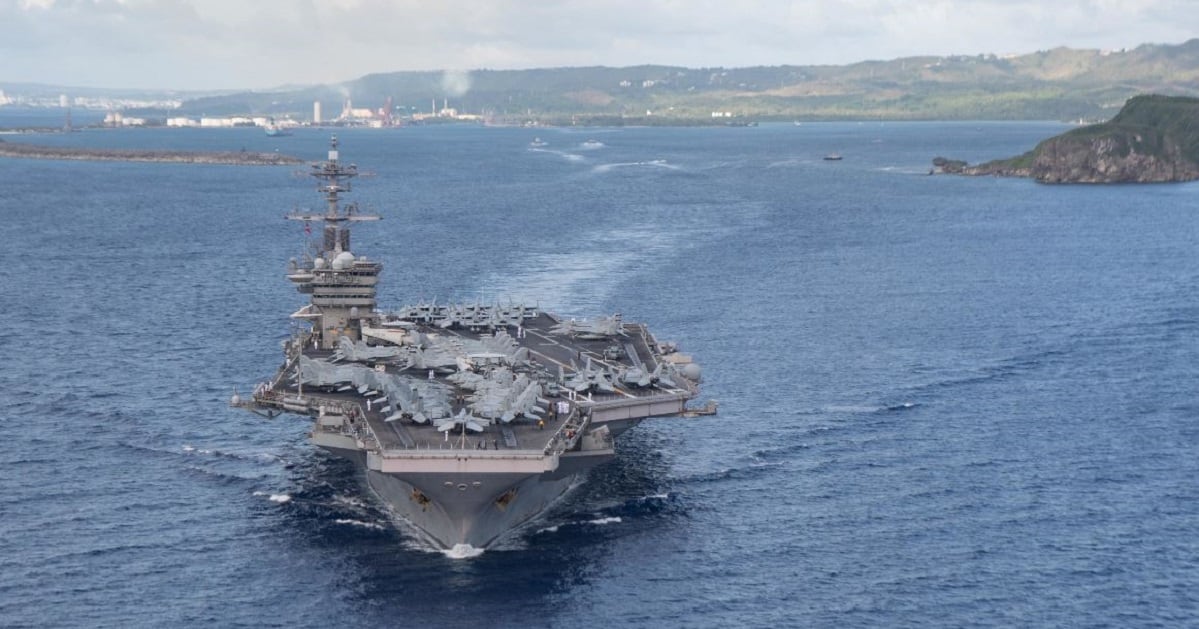The outgoing head of the U.S. Indo-Pacific Command laid out key reasons why increased funding for the region is key to counter China, an adversary he said could achieve overmatch within the next five years, far ahead of past predictions.
Adm. Philp Davidson stressed the importance of the funding to largely supportive members of the Senate Armed Services Committee on Tuesday. He asked senators to fully fund the requested $4.68 billion for the Pacific Defense Initiative, more than double the $2.2 billion approved in last year’s annual defense spending bill.
The PDI is not only for the coming fiscal year budget. Proposals total $27 billion between 2022 and 2027. That’s up from last year’s estimate of $18.5 billion for the six-year period.
RELATED

That money would go toward new sensor networks, missile defense systems and long-range missiles, new missiles and air defenses, staging areas, intelligence-sharing centers, supply depots, testing ranges and modernized military exercises with allies and partners in the region to counter China.
It resembles the European Defensive Initiative, which has led to advanced equipment, such as the $1.6 billion Aegis Ashore system, a 360-degree anti-cruise and anti-ballistic missile defense system in Romania and another being built in Poland to counter Russian military aggression.
“I think our conventional deterrence is eroding in the region,” Davidson said.
For years, Davidson has advocated for the same Aegis Ashore system to be placed in Guam. It remains his top unfunded priority in the current defense spending bill.
“But one of the key shortcomings is not having this defense system and we need it going forward,” Davidson said.
In a report to Congress on PDI that leaked to the media last week, Davidson noted that even with the increased cost, the requested annual price tag came in at two-thirds the cost of the EDI, which was $5.9 billion in fiscal year 2020.
The current Terminal High Altitude Area Defense battery on the island does not have the ability to protect against China’s arsenal nor its recent circumnavigation of Guam and the Northern Marianas Islands, showcasing its ability to reach striking ranges of Guam.
“It is not just a place to fight from but we are going to have to fight for it in order to do that,” Davidson said.
During the hearing, Davidson pointed several times that a Chinese government propaganda video released last year showed its bomber forces striking Guam.
“Guam is a U.S. territory. We have 170,000 citizens living there,” Davidson said. “Their defense is national defense.”
He noted that more than 20,000 defense department personnel and their family are there and the island serves as a crucial communications hub, major regional power projection airfield and a deepwater port.
Sen. Mazie Hirono, D-Hawaii, asked Davidson why the $300 million originally slated for joint training and exercises for the next five years saw a massive jump to $2.8 billion since last year’s introduction of the PDI.
Davidson explained that the increased training budget reflected the use of advanced systems, such as bringing online the 5th Generation fighters such as the F-35 Lighting II and doing more live, virtual, constructed training to better replicate modern warfighting.
“We’ve got to advance our exercise program in a way that allows us to exercise those capabilities deliberately,” he said.
In 2019, a Department of Defense Inspector General’s report noted that aviation units in the INDOPACOM area could not train as they would fight.
The report noted aging equipment, which included a 1970s-era electronic warfare module and systems so out of date that the F-35 and F-22 Raptor fighter jets don’t view them as a threat.
Several senators from Western states, including Alaska and Hawaii, asked Davidson about permanent and rotational troops.
The admiral said a mix of the two would be needed, but both would be used.
He noted that while 5th generation fighter aircraft stationed in Alaska — of which there could be 100 or more on notice — could reach the South China Sea within hours, other elements such as ship-based assets, would take three weeks from the West Coast and 17 days from Alaska to reach the fight.
To meet the threat, troops at sea, on Guam, Okinawa, South Korea and elsewhere will have to be ready.
“The perfect speed is being there,” Davidson said.
Sen. Tom Cotton, R-Arkansas, asked Davidson about the status of Chinese military nuclear capabilities.
Davidson said that the nation had quadrupled its nuclear stockpiles over the past 20 years and would likely at least double those weapons in the next decade, possibly tripling or quadrupling the numbers.
If they were to quadruple the stockpile then China would have a nuclear overmatch against the United States within the decade. The combined China-Russia nuclear arsenal already overmatches the United States, Davidson said.
Davidson is scheduled to retire this year. President Joe Biden has nominated Adm. John Aquilino, the current head of the U.S. Pacific Fleet, to replace him.
Todd South has written about crime, courts, government and the military for multiple publications since 2004 and was named a 2014 Pulitzer finalist for a co-written project on witness intimidation. Todd is a Marine veteran of the Iraq War.





